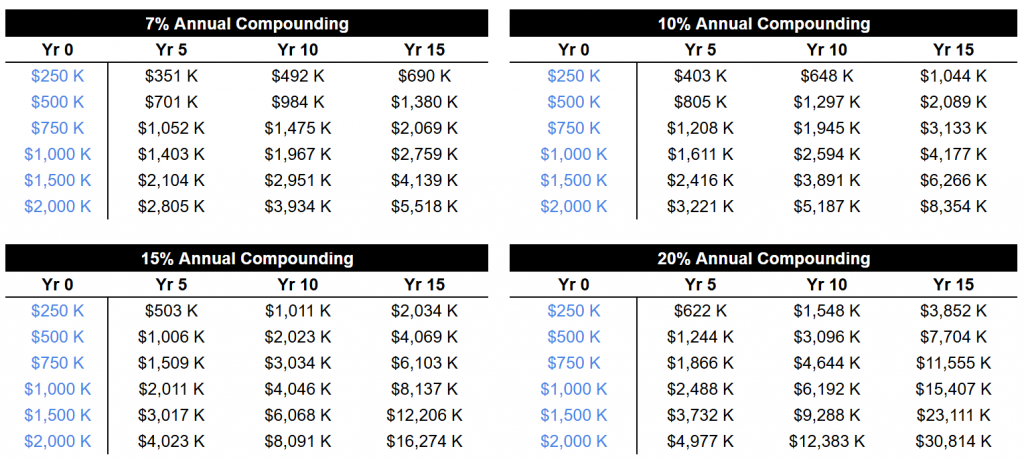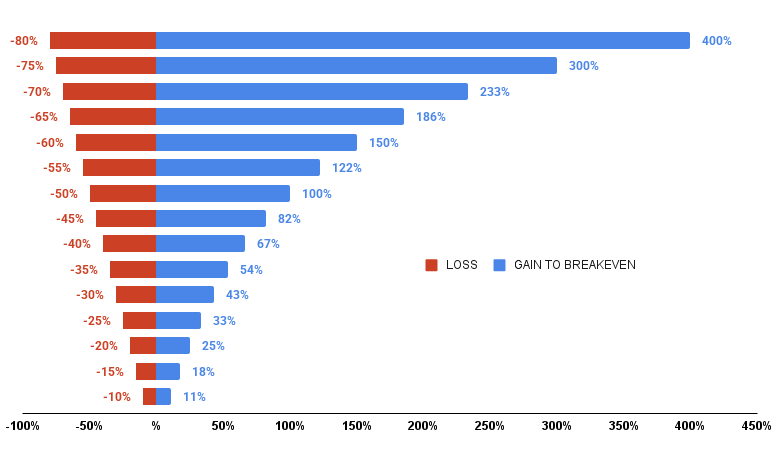Wealth Math: Limit Loss; Compound Gains
Warren Buffett once illustrated the power of compounding with a fun thought experiment. The Lenape people sold Manhattan island to Peter Minuit in 1626 for 60 guilders, or about $24. Buffett pointed out that had the $24 been invested continuously at an annual return of 7% it would be more than enough to buy back all of Manhattan today even with all the real estate improvements. Hard to believe right? Yet if you do the math you’ll find that over 399 years that $24 compounding at 7% annually grew to $12.7 trillion (2025). The total value of Manhattan is estimated to be $3-4 trillion.
(1) Compounding Is Not Intuitive
Compounding over time is an amazingly powerful force. Most of us are terrible at estimating its impact. Try it for yourself: how much is $1 million compounded at 10% over 50 years? Take a moment to try to estimate it. Now compare that to the answer of about $100 million. Amazing right?
Even seemingly small differences of a couple percentage points per year in returns over many years makes a significant difference in the ultimate value of the portfolio. The tables below illustrate compound returns for different portfolios across different time scales.
- Should You Buy Apple Stock Before Tim Cook Reveals “Newest Family Member”?
- What’s Driving Western Digital Stock’s 10% Surge?
- What’s Next For Expedia Stock After An Upbeat Q4?
- What’s Next For Tapestry’s Stock After A Solid Q2?
- What’s Next For United States Steel Stock After A Mixed Q4?
- HIMS Stock: What Comes After the Nine-Fold Jump?

(2) Limit Loss
Compounding produces amazing results over time when you’re able to preserve capital to being with. The importance of avoiding significant losses to begin with is illustrated by the chart below. The math is simple. If you lose 25%, you need a 33% gain just to recover. If you lose 50%, you need a 100% gain to recover. Basic but often forgotten.
Returns Needed to Breakeven After a Loss

(3) Focus Efforts on Risk Control Rather Than Prediction
Risks are often more controllable than returns. As an investor, focusing on appropriate risk control is essential to limiting loss and allowing for compounding to work its magic over time. It’s more important than predicting winners or predicting the direction of markets and economic indicators (interest rates, GDP growth).
(4) Humans Are Not Wired to Invest
As basic as these concepts are, many investors seem to forget them. When faced with a significant loss or the temptation to join the momentum of a hot performer we become blinded by emotion and forget these core principles. Glenn Caldicott, CIO of Empirical Asset Management, says “humans are meant to survive, not invest”. Resisting fight or flight instincts or overcoming fear takes willful effort. Having in place systems, plans or working with a wealth advisor can help you navigate challenging times more effectively.
Systematic Strategies & Rules-Based Wealth Management
Trefis runs systematic portfolio strategies that incorporate risk control through a combination of high quality picks and active hedges. We’ve partnered with Empirical Asset Management, a rules-based wealth manager, to make these strategies available to investors. If you’re interested in learning more about Trefis strategies or Empirical check out this link.
You also may be interested in: